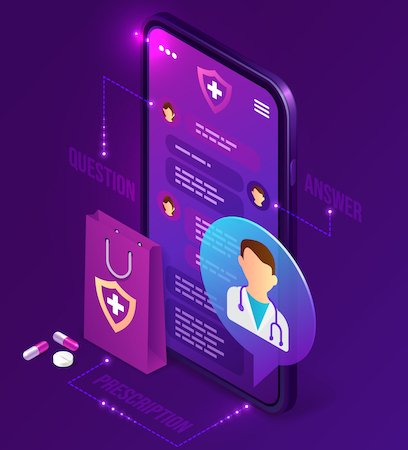Imagine you’re craving a delicious pizza from your favorite restaurant, a few taps in DoorDash or Uber Eats, and that’s a reality.
Now think about all the time it would take to get there, wait in line, and finally get your hands on that cheesy goodness. Don’t we deserve the same with medicine?
Medicine delivery apps completely transform how we access essential healthcare services in this fast-paced digital era. In this guide, we’ll take you through the nitty-gritty of on-demand medicine delivery app development, giving you all the insights you need to create your own successful online medicine delivery app.
Top Takeaways:
- Developing a successful medicine delivery app involves careful planning and execution. Essential factors to consider include a user-centric design, continuous testing and improvement, scalability, and partnerships with reputable pharmacies. An agile development process with regular user feedback can ensure the app meets user expectations.
- The development of a successful medicine delivery app involves a thoughtful and thorough process, starting from market research and ending with ongoing performance monitoring. However, beginning with a simple Proof of Concept can be instrumental in testing the core concept, securing potential investment, and ensuring a smooth implementation process that doesn’t disrupt current business models.
- Partnering with reputable pharmacies is essential to medicine delivery mobile app development. This partnership ensures the reliability of the medications delivered and enhances trust, thereby improving user retention and the success of the app.
Table of Contents:
Medicine Delivery Market Overview
Pharmacy Delivery App Must-Have Features
7 Steps to Develop a Medicine Delivery App
- Step 1: Market Research
- Step 2: Define Features
- Step 3: Choose a Business Model
- Step 4: UI/UX Design
- Step 5: Development
- Step 6: Testing
- Step 7: Launch and Monitor
Pharmacy Delivery App Development Best Practices
How Much Does it Cost to Create a Medicine Delivery App?
Our Experience in On-demand Delivery App Development
Medicine Delivery Market Overview
Welcome to the fast-paced world of medicine delivery apps, where convenience meets healthcare. Here’s a quick overview of the current market landscape:
- Rapid growth: The online pharmacy industry is projected to grow by 13.40% from 2023 to 2027, reaching a market volume of US$52.33bn in 2027. It’s not just a trend; it’s a revolution driven by online pharmacy delivery app development.
- Popular medicine delivery apps: Leading the charge are apps like PharmEasy, CVS Pharmacy, and 1mg. Each of these has over 10 million downloads on Google Play alone, indicating a strong demand for such services.
- High user satisfaction: These apps aren’t just popular; they’re loved. High user ratings are a testament to the value they provide, combining the ease of digital platforms with the essential service of healthcare delivery.
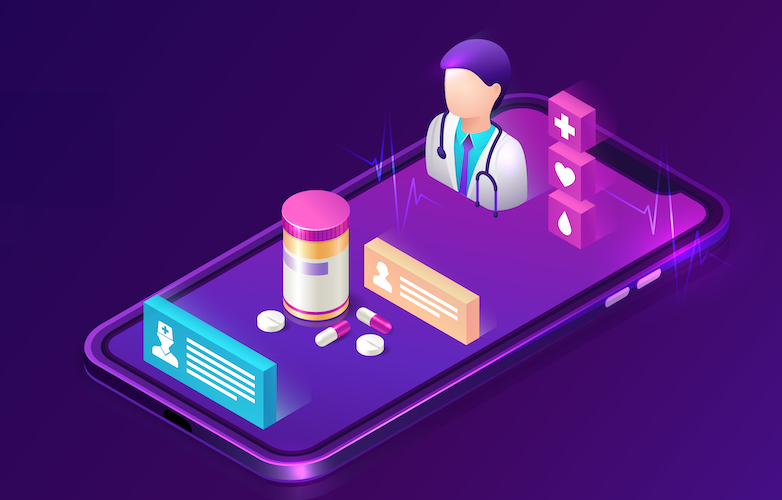
- Big players are coming: The real game-changer? Amazon’s acquisition of PillPack in 2018. This foray by the tech giant signals a serious investment in the future of digital health and underscores the potential of the medicine delivery market.
- Adding meds delivery to established wellness and healthcare apps: A standout example of the growing trend of medicine delivery services is Noom, a popular weight management app. In a bold move, Noom recently introduced injectable medications like Wegovy and Ozempic to its users through a subscription service called Noom Med1. This service not only provides prescription weight-loss drugs but also tests for conditions that contribute to weight gain and includes telehealth consultations.
Also Read: Healthcare App Development Guide
This data paints a clear picture: the medicine delivery app market is not only thriving but poised for significant growth. Whether you’re a seasoned app developer or a budding entrepreneur, there’s no better time to develop a medicine delivery app.
Top Players on the Market
Let’s dive into some of the leading players in the sector, whose successful strategies and features can serve as valuable inspiration as you aim to create a medicine delivery app of your own.
CVS Pharmacy
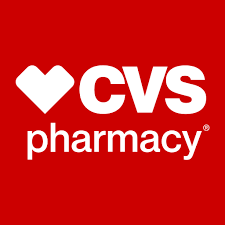
CVS Pharmacy is a well-established name in the United States health sector. Its mobile app bridges the gap between customers and their healthcare needs, offering services from prescription management and medicine delivery to shopping for wellness and healthcare products.
- Founded: 1963 (App introduced later)
- Funds Raised: CVS is a publicly-traded company
- Mobile Platforms Supported: iOS, Android
- Headquarters: Woonsocket, Rhode Island, U.S.
1mg
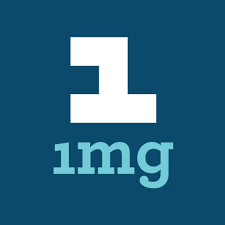
1mg is a comprehensive health app based in India that offers a broad spectrum of services, including medicine delivery, lab test bookings, doctor consultations, and detailed information about medicines online.
- Founded: 2015
- Funds Raised: Over $70 million
- Mobile Platforms Supported: iOS, Android
- Headquarters: Gurugram, India
Capsule Pharmacy

Capsule is another leading medicine delivery app that stands out for its streamlined and convenient user experience. It prides itself on having “pharmacy-grade assurance” in terms of quality, speed, and customer service.
- Founded: 2018
- Funds Raised: Over $50 million
- Mobile Platforms Supported: iOS, Android
- Headquarters: New York City, U.S.
PillPack (by Amazon)
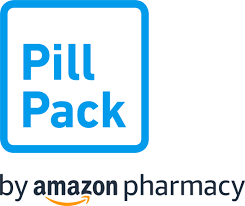
Amazon’s PillPack is a full-service online pharmacy app that sorts your medication by dose and delivers it directly to your door. They’re also equipped to handle renewals and refills, making medication management a breeze.
- Founded: 2013 (Acquired by Amazon in 2018)
- Funds Raised: PillPack is owned by Amazon, a publicly-traded company
- Mobile Platforms Supported: iOS, Web-based
- Headquarters: Manchester, New Hampshire, U.S.
Noom Med1

Noom Med1, an extension of the Noom app, provides a robust solution for weight management. The service offers personalized medication plans, including prescription weight-loss drugs, and also includes telehealth consultations.
- Founded: Noom was founded in 2008, with Noom Med1 launched recently
- Raised Funds: Noom has raised over $114 million
- Mobile Platforms Supported: iOS, Android
- Headquarters: New York City, New York, U.S.
Medicine Delivery Future Trends
As the digital revolution continues to reshape the healthcare sector, several exciting trends are emerging in medicine delivery application development. Here’s a quick rundown of what we can expect to see:
- Smartwatch Integration: With wearable technology like the Apple Watch becoming increasingly popular, integrating medicine delivery apps with these devices is a no-brainer. Imagine receiving medication reminders directly on your wrist or even ordering refills with a simple tap.
- AI-Powered Personalization: AI technology holds immense potential for personalizing user experiences. From smart reminders based on individual health profiles to personalized medication suggestions, the possibilities are endless.
- Voice Commands and Smart Assistants: With Siri, Google Assistant, and other smart assistants becoming a staple in our lives, their integration into medicine delivery applications can help order medicine as quickly as saying it out loud.
- AI for Prescription Scanning: AI could simplify the process of finding and ordering the proper medication by quickly scanning prescriptions and matching them with available products.
- Telehealth Integration: As demonstrated by Noom, integrating telehealth consultations into medicine delivery apps can provide users with a comprehensive healthcare solution right at their fingertips.
- White-label solutions: To meet the growing demand for medicine delivery services, white-label medicine delivery app development enables companies to quickly create their own branded apps without having to start from scratch.
These trends indicate that the future of medicine delivery apps lies in leveraging technology to create more integrated, personalized, and user-friendly experiences. The future is exciting, and it’s happening right now.
Also Read: White Label Telemedicine App Development
Pharmacy Delivery App Must-Have Features
When it comes to developing a pharmacy delivery app, the features you incorporate can make or break your success. Here’s a breakdown of some essential and advanced features that can set your app apart in this competitive market.
Default Features
As you venture into the realm of home delivery medicine app development, understanding and incorporating key standard features is crucial to ensure your app’s utility and user-friendliness.
User Registration & Profile Management
Simple and secure user registration is a must. Users should be able to create and manage their profiles effortlessly (including an admin and courier profile), adding necessary medical details and preferences.
Search & Filter
A robust search function with filter options ensures users can easily find the needed medications.
Order Placement & Tracking
Users should be able to place and manage orders and track their progress in real-time, ensuring transparency and building trust, just like in food delivery applications.
Payment Integration
Diverse and secure payment options are critical. From credit cards to digital wallets, they provide multiple ways for users to pay.
Ratings & Reviews
Allowing users to rate and review products and services helps improve credibility and user satisfaction.
Advanced Features
To make a medicine delivery app stand out in an increasingly competitive market, incorporating advanced features can genuinely differentiate your product, enhancing user experience and service efficiency.
AI Prescription Scanning
With AI, users can simply scan their prescriptions, and the app can identify and list the required medications.
Related: E-Prescription App Development
Medicine Management for Friends/Family
This feature allows users to manage medicine orders for their loved ones, enhancing convenience and expanding your app’s user base.
Drug Interaction Checker
An invaluable tool that alerts users about potential drug interactions, promoting safer use of medications.
Beyond the mentioned functionalities, there is an array of additional features that can further enhance the usability and user experience of your medicine delivery app:
- Track Delivery on a Map: This feature allows users to monitor their order’s progress in real-time on a map, providing a visually engaging way to track deliveries.
- Push Notifications: Timely notifications about order delivery status, prescription refills, or personalized health tips can keep users engaged and informed.
- EHR Integrations: Integrating with Electronic Health Records (EHR) can improve prescription accuracy and facilitate seamless information exchange between pharmacies and healthcare providers.
- Chatbot: An AI-powered chatbot can offer 24/7 customer support, answering queries and providing assistance instantly.
- Medical Reminders: Automatic reminders for medicine intake or prescription refills can help users manage their medication schedules effectively.
- Instant Refills: This feature allows users to easily reorder their regular medications from the order history, enhancing user convenience and app stickiness.
- Search for Substitutes: A feature allowing users to find cheaper or better substitutes for their prescribed medications can be a real game-changer, providing value-added services to users.
Incorporating these essential and advanced features when you build a pharmacy delivery app will set your platform apart in the burgeoning digital healthcare market.
Admin Features
Inventory Management
A comprehensive dashboard for admins to track and manage inventory, ensuring a smooth supply of medicines.
Reporting & Analytics
Advanced reporting and real-time analytics tools provide valuable insights into user behavior, sales trends, and overall app performance.
Order Management
Admins should have complete control over order management in their admin panel, from confirmation to delivery, to ensure efficient operations.
Incorporating these features will enhance user experience and streamline backend operations. Remember, a successful pharmacy delivery app is one that marries convenience with comprehensive healthcare solutions.
7 Steps to Develop a Medicine Delivery App
Pharmacy home delivery app development is an intricate process that calls for a detailed understanding of the healthcare industry, alongside a keen awareness of the needs and preferences of end-users.
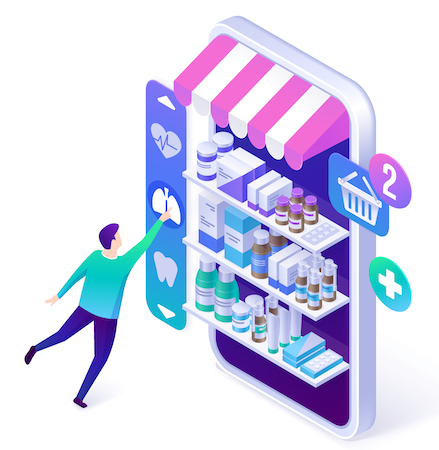
To help you navigate developing your own medicine delivery app, here’s a step-by-step guide to the process:
| Step | Description |
|---|---|
| 1. Market Research | Analyze the market and identify target audience needs. |
| 2. Define Features | Decide on essential features like tracking and payments. |
| 3. Choose a Business Model | Select a revenue model like subscriptions or fees. |
| 4. UI/UX Design | Design an intuitive and user-friendly interface. |
| 5. Development | Build the app using a secure and scalable tech stack. |
| 6. Testing | Test thoroughly to ensure smooth functionality. |
| 7. Launch and Monitor | Deploy, gather feedback, and update continuously. |
Step 1. Conduct Market Research & Competitor Analysis
Analyzing the market and researching competitor apps is essential to understand what works and what doesn’t. It helps inform feature selection and prioritize product development.
Step 2. Outline User Personas & Requirements
Defining user personas and outlining product requirements can help focus the design process on specific goals. A detailed wireframe is a great way to visualize your app’s structure, flow, and features.
Step 3. Choose an App Development Model
The mobile app model you choose (native, web, or hybrid) will depend on your platform, budget, and development timeline. Consult with an experienced app development company to make an informed decision.
Step 4. Design & Develop the App
The design phase is where you can really start to bring your ideas to life. Experienced UX/UI designers can help create a visually engaging UI that’s focused on delivering value and tailored to users’ needs.
At Topflight, we highly value the benefits of rapid prototyping in our app development process. It is a quick and cost-effective way to transform abstract ideas into tangible models that can be evaluated, tested, and improved upon. By creating functional prototypes early on, we gain crucial insights into user behavior, preferences, and potential issues.
This iterative approach allows us to refine the user interface, enhance functionality, and perfect the user journey before diving into full-fledged development. It saves time and resources and helps us build a medicine delivery app that genuinely resonates with our end users.
Once the design is complete and all requirements are in place, you can develop the app following your chosen model.
Step 5. Test & Debug
Testing is a crucial step that helps ensure an error-free user experience. It’s essential to thoroughly test all features throughout development to ensure quality and functionality before launching your product. Make sure to partner with a seasoned delivery app development company for this.
Step 6. Launch & Market Your App
Once you have a polished product and all the necessary permissions, it’s time to launch your app and make it available for users. To maximize reach, consider creating a marketing plan that includes content marketing strategies, SEO, email marketing campaigns, and social media promotion.
Step 7. Track Performance & Monitor User Feedback
Continuous monitoring and analysis of app performance is essential for long-term success. Keep an eye on user feedback to better understand the needs and preferences of your target audience, identify room for improvement, and make changes accordingly.
Things to Keep in Mind
While the outlined steps for medication home delivery app development might seem similar to the development process for other software products, the healthcare domain brings its own unique challenges and opportunities. Below, we delve into some key advice nuggets that can pave the path to success in medication delivery app development.
Start with a Proof of Concept
While it’s true that a comprehensive medicine delivery system would ideally include multiple front-ends:
- mobile apps for customers (mobile development)
- administrative dashboards for staff (web development)
- dedicated interfaces for couriers (the delivery business may be entirely outsourced at the start)
– it’s important to remember the value of starting simple. A proof of concept (PoC) can be an extremely effective first step.
By developing a PoC, you can test and validate your core ideas and concepts without investing heavily in full-scale development. It allows you to gather valuable feedback from early users and identify potential challenges or areas for improvement in the initial stages.
Moreover, a PoC can help you demonstrate the potential and viability of your app to investors or stakeholders, helping secure the necessary funding for further development.
This approach holds especially true for pharmacies that already have existing solutions running their operations. A proof of concept is set up to integrate seamlessly with pre-existing Customer Relationship Management (CRM) systems or other legacy platforms, provided these systems are scalable and support all the necessary features. This ensures your medicine delivery app can be developed and implemented smoothly without disrupting your pharmacy business flow.
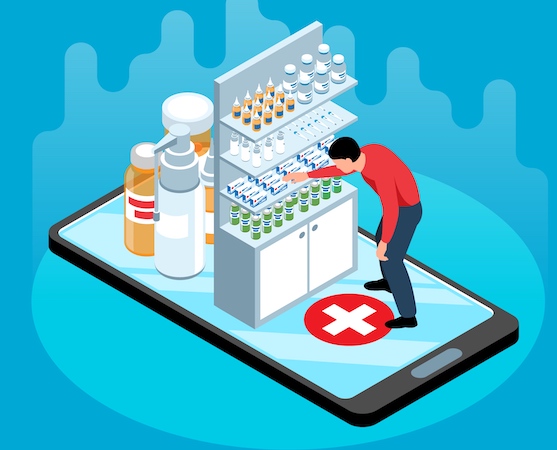
So, while the end goal may be to build a medicine delivery app as a comprehensive, multi-interface system, it’s wise to first focus on proving the concept and value proposition before expanding and refining your offering.
Leverage the Power of Integrations
In the modern digital ecosystem, your medicine delivery app will not exist in a vacuum. It must interact seamlessly with various other platforms and services to offer a smooth, efficient, and comprehensive user experience. Integrations may include:
- maps for real-time tracking
- medicine databases for accurate drug information and inventory management
- CRM systems for maintaining customer relationships
- insurance services for co-pay options
- medicine databases to keep medical info handy
- EHR systems for patient information
- e-prescription platforms for order placement
For instance, to integrate a comprehensive medicine database into your medical delivery app development, you might consider using an API like Dosespot. APIs enable you to extend the functionality of your app without having to build everything from scratch, saving you time and resources in the software development process.
Prioritize Security and Compliance
When developing a medicine delivery app, ensuring that all sensitive user data is protected and that the app’s setup meets all regulatory compliance standards is paramount. Given that your app will handle personal health information, it needs to be compliant with the Health Insurance Portability and Accountability Act (HIPAA) in the United States and other region-specific healthcare regulations elsewhere. Non-compliance can result in serious legal consequences and damage to your reputation.
Here are a few considerations to ensure your app is HIPAA-compliant:
- Implement strong user authentication measures such as two-factor authentication.
- Establish a secure connection for data transmission.
- Use encryption methods for storing sensitive data.
- Regularly update and patch security systems to mitigate potential vulnerabilities.
- Ensure third-party integrations are also compliant with healthcare regulations.
It’s not just about avoiding penalties; prioritizing security and privacy will also help build trust with your users. They need to feel confident that their sensitive health information is safe in your hands.
Moreover, if you plan to operate internationally, you will need to be aware of and comply with other countries’ healthcare regulations. GDPR in Europe, PIPEDA in Canada, and Australia’s Privacy Act are just a few examples.
Understanding and complying with these regulations can be complex, so it’s advisable to collaborate with legal experts and certified professionals with in-depth knowledge of healthcare app compliance and offer pharmacy app development services. This way, you can ensure that your app is both user-friendly and legally compliant, further setting you up for success in the competitive medicine delivery market.
Pharmacy Delivery App Development Best Practices
Navigating the world of medicine home delivery app development might seem daunting. Still, with the right approach and understanding of the best practices, you can successfully deliver an app that meets the needs of your users and stands out in the market. Let’s explore some of these best practices for developing pharmacy delivery apps.
- User-Centric Design: Isn’t it true that a user-friendly design can make all the difference in an app’s success? Keep your users at the forefront of your design strategy. Make navigation intuitive and ensure the app is accessible to people of all ages.
- Leverage SDKs and Code Libraries: Why reinvent the wheel when you have ready-made solutions at your disposal? Utilize SDKs and code libraries for standard features. For instance, use ChatGPT for integrated chatbots to enhance user engagement.
- Multi-Platform Availability: Do you want to reach a wider audience? Develop your app for both iOS and Android platforms. This way, you ensure no potential user is left out.
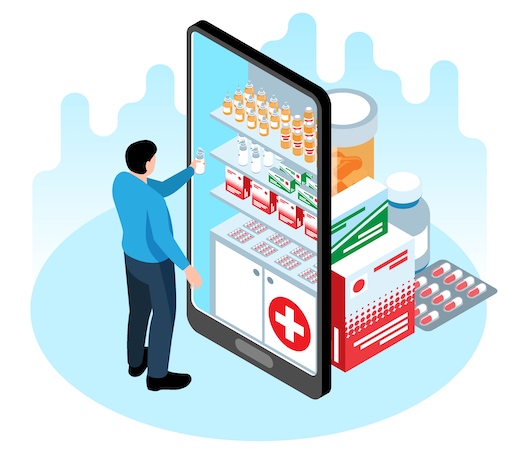
- Real-Time Updates: Transparency builds trust, doesn’t it? Provide real-time order tracking and updates to keep your users in the loop.
- High-Quality Content: Quality content is king. Include detailed descriptions for each medication, list potential side effects, contraindications, and so on. Sprinkle in expert quotes and interesting facts to keep your readers engaged.
- Continuous Testing & Improvement: No app is perfect from the get-go, right? Regularly test the app for bugs and performance issues. Listen to your users’ feedback and use it to improve the app.
- Scalability: Dream big! Design your app with future growth in mind. As your user base expands, your app should be able to handle increased traffic without compromising on performance.
- Partnerships with Reputable Pharmacies: Quality matters. Partner with reputable pharmacies to ensure your users get reliable medications delivered to their doorstep.
These best practices will not only help you build an effective pharmacy delivery app but also ensure it stands out in the competitive healthcare app market.
How Much Does it Cost to Create a Medicine Delivery App?
The cost to develop a pharmacy delivery app, also known as a medicine delivery app, can vary greatly depending on the features, complexity, and region. For creating a Minimum Viable Product (MVP) for a pharmacy delivery app, you should be prepared to invest anywhere from $90,000 to $150,000. A more comprehensive solution with advanced features and integrations to create a pharmacy delivery app can cost between $200,000 and $350,000. Remember, this is a ballpark range, and actual costs could differ based on specific requirements.
While the cost might seem steep, let’s pivot and discuss an alternative approach that could yield better value for your investment – the Vision to Traction System by Topflight. This unique system focuses on meticulous planning, iterative development, and continuous improvement, aiming to shape your vision into a tangible, successful product.
Related: Cannabis Delivery App Development
The first stage of this system involves a deep dive into your idea, identifying the target audience, their needs, and the best ways to meet those needs. The team then drafts a roadmap outlining the product features, design, and development stages. The magic lies in the iterative, agile development process, where the product is built in stages, and each stage is tested and improved upon based on real-user feedback. This iterative process ensures that the final product aligns perfectly with user expectations.
The Vision to Traction System ensures an excellent product and efficient resource utilization. By focusing on stages and iterations, it helps avoid unnecessary features and costs, leading to a better return on investment. Thus, the VTS presents an effective and efficient path to realizing the dream of your own successful medicine delivery app.
Our Experience in On-demand Delivery App Development
Topflight worked on a telehealth platform for dermatology, enabling patients to easily sign up, complete a questionnaire, and order nasal spray delivery. The app includes a built-in chat feature for patients to communicate with medical specialists.
Both patients and providers have access to individual dashboards. Patients can review their digital prescriptions, track symptoms, and receive personalized advice. Providers can manage content, patients, and more.
Please get in touch if you plan to start a medicine delivery app.
[This blog was originally published on 09/25/2024, but has been updated for more recent content]
Frequently Asked Questions
What key features should be considered when developing a medicine delivery app?
Key features to consider include a user-centric design, multi-platform availability, real-time updates, high-quality content, continuous testing and improvement, scalability, and partnerships with reputable pharmacies. An integrated chat feature, individual dashboards for patients and providers, and compliance with healthcare regulations are also important.
How much does it cost to develop a medicine delivery app?
The development cost can vary based on features, complexity, and region. A Minimum Viable Product (MVP) could range from $90,000 to $150,000, while a more comprehensive solution may cost between $200,000 and $350,000. However, these are ballpark figures, and costs could be different based on specific requirements.
What is the vision to traction system by Topflight?
The Vision to Traction System is an approach focusing on meticulous planning, iterative development, and continuous improvement. It starts with a deep dive into your idea to identify the target audience and their needs, then creates a roadmap outlining the product features, design, and development stages. The product is built in stages, and each step is tested and improved based on real-user feedback.
What is the significance of creating a proof of concept in pharmacy app development?
Creating a proof of concept (PoC) is a critical step in pharmacy app development. It serves as a practical demonstration that your app concept is feasible and has the potential to succeed. A PoC comes in handy when validating your idea, testing assumptions, and spotting potential roadblocks. It’s a low-risk way to verify if your app can function in real-world scenarios. It allows you to evaluate the technical aspects and user acceptance before investing significant resources into full-scale development. Additionally, a PoC can be instrumental in attracting investors, as it showcases the viability of your idea, thereby increasing their confidence in your project.
Is it necessary to partner with reputable pharmacies when developing a medicine delivery app?
Absolutely. Partnering with reputable pharmacies ensures the reliability of the medications delivered to users. It enhances trust in your app and provides your users with quality products.
